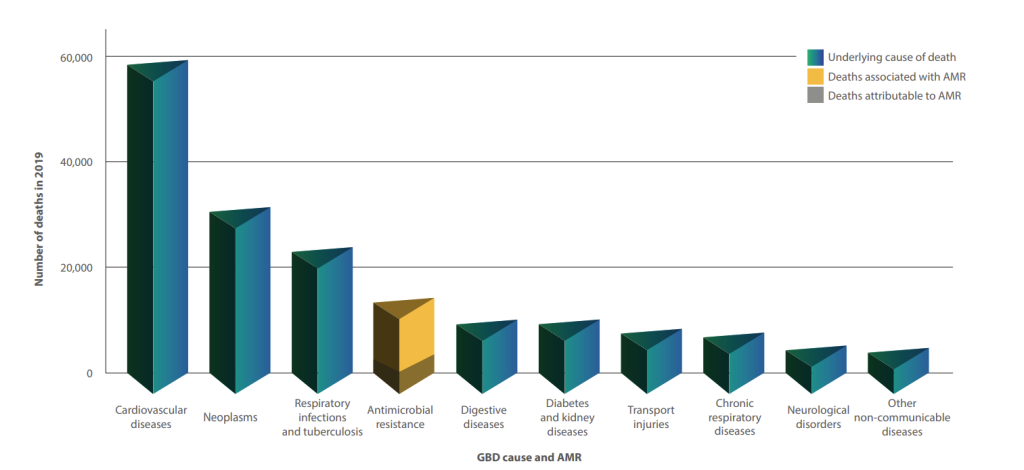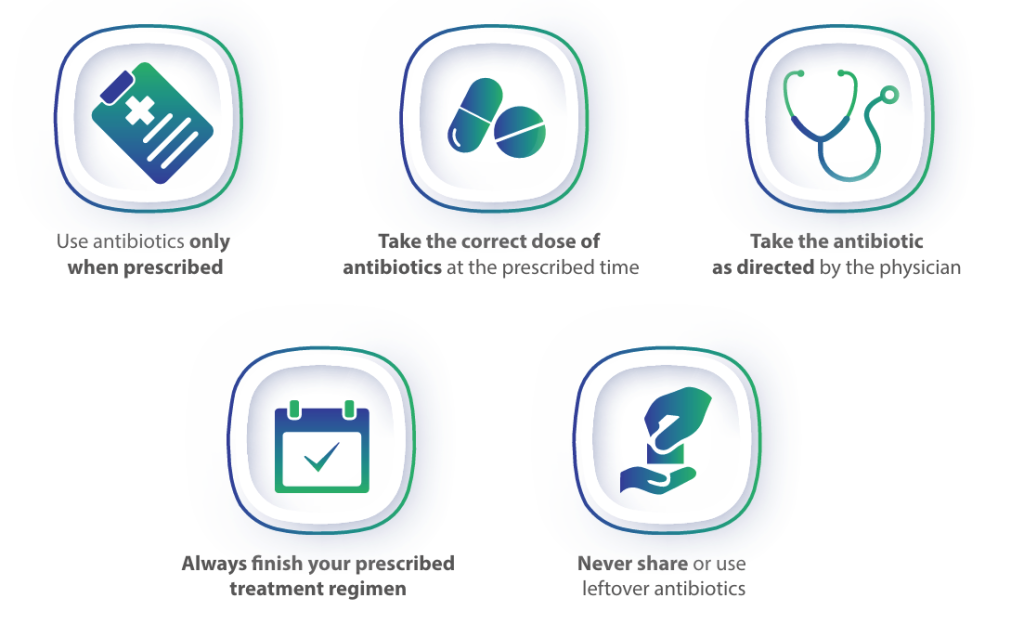
Defining Antimicrobial Resistance
Antimicrobial resistance (AMR) has emerged as a critical global health challenge, posing a significant threat to effective treatment of infections.1,2 It is defined as the ability of microorganisms to withstand the effects of drugs that once killed them or inhibited their growth.3 AMR can affect any microbe, including bacteria, fungi, viruses, and parasites, making it a multi-faceted issue that impacts various aspects of healthcare.1
Why We Should Be Concerned?
Antimicrobial resistance (AMR) is a global challenge, with 4.95 million people dying from drug-resistant infections in 2019, 1.27 million of whom were directly affected by AMR, and one in five of these deaths occurring among children under 5 years old.4 There were 3,500 deaths attributable to AMR and 14,000 deaths associated with AMR in Malaysia. The number of deaths due to AMR is higher than those resulting from digestive diseases, diabetes and kidney diseases, transport injuries, chronic respiratory diseases, and neurological disorders.

Comparison between AMR and other causes of death in Malaysia, 2019.
How Resistance Develops
Resistance develops through several mechanisms.1,3,5 Microorganisms can undergo genetic mutations that render them resistant to drugs, or they can acquire resistance genes from other organisms. Factors that increase the risk of AMR include:
Who is at Risk?1-3
Anyone at any age can be affected by antimicrobial resistance, but those with weakened immune systems or frequent infections that require antimicrobial therapy are at higher risk. The more often you experience infections, the greater your chance of encountering bacteria or viruses that are resistant to treatment. AMR also makes infections harder to treat while making medical procedures and interventions such as surgery, chemotherapy, and organ transplants much riskier.
Prevention and Mitigation Strategies1-3,5
While it is impossible to completely eliminate antimicrobial resistance due to microbes' ability to adapt, you can take steps to limit your exposure.

Adopting these simple measures can help curb antimicrobial resistance.
It is advisable to maintain a healthy diet, exercise regularly, get enough sleep, and practice good hygiene, such as frequent handwashing, to prevent illness and reduce the need for antimicrobial drugs.
Conclusion
Antimicrobial resistance is a complex and growing challenge that requires urgent attention and action. By understanding its mechanisms, we can mitigate its impact and preserve the effectiveness of antimicrobials for future generations. We all play a role in this effort, from making informed decisions about antibiotic use to supporting global initiatives aimed at combating AMR.
Like what you read?
Let us know what you think.
Contact us for any comments and enquiries:
E: info@mediconnexionsconsulting.com
T: +603 7832 0188
Mediconnexions Consulting Sdn. Bhd. offers a wide range of integrated marketing and communications services related to the medical, pharmaceutical, and nutritional sciences.
Visit our website at www.mediconnexionsconsulting.com
Medical webinar organiser Malaysia, creative agency for medical Malaysia, medical conference organiser, medical digital marketing agency, medical marketing agency, medical writer Malaysia, medical writer.
References: